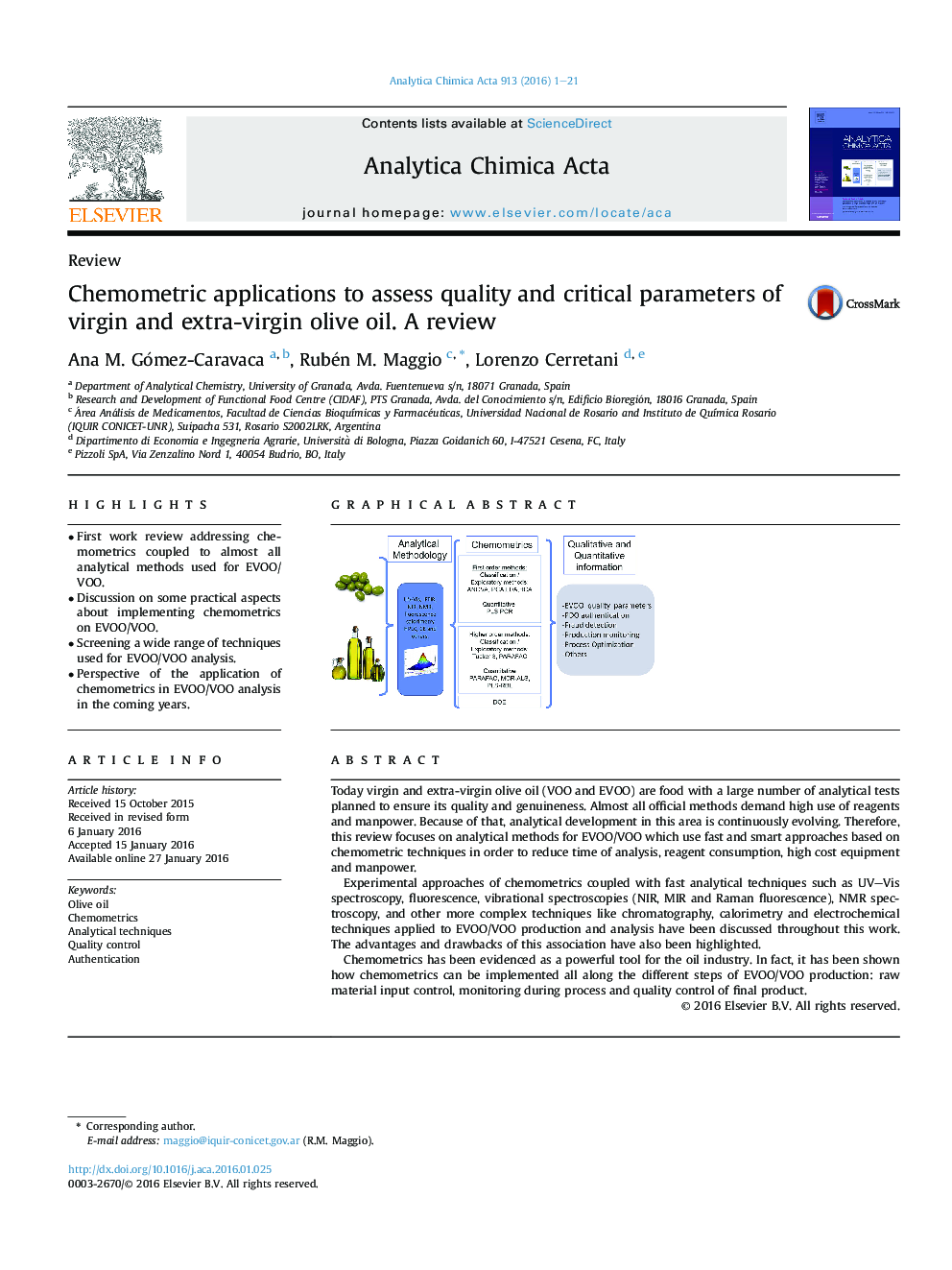| Article ID | Journal | Published Year | Pages | File Type |
|---|---|---|---|---|
| 1162920 | Analytica Chimica Acta | 2016 | 21 Pages |
•First work review addressing chemometrics coupled to almost all analytical methods used for EVOO/VOO.•Discussion on some practical aspects about implementing chemometrics on EVOO/VOO.•Screening a wide range of techniques used for EVOO/VOO analysis.•Perspective of the application of chemometrics in EVOO/VOO analysis in the coming years.
Today virgin and extra-virgin olive oil (VOO and EVOO) are food with a large number of analytical tests planned to ensure its quality and genuineness. Almost all official methods demand high use of reagents and manpower. Because of that, analytical development in this area is continuously evolving. Therefore, this review focuses on analytical methods for EVOO/VOO which use fast and smart approaches based on chemometric techniques in order to reduce time of analysis, reagent consumption, high cost equipment and manpower.Experimental approaches of chemometrics coupled with fast analytical techniques such as UV–Vis spectroscopy, fluorescence, vibrational spectroscopies (NIR, MIR and Raman fluorescence), NMR spectroscopy, and other more complex techniques like chromatography, calorimetry and electrochemical techniques applied to EVOO/VOO production and analysis have been discussed throughout this work. The advantages and drawbacks of this association have also been highlighted.Chemometrics has been evidenced as a powerful tool for the oil industry. In fact, it has been shown how chemometrics can be implemented all along the different steps of EVOO/VOO production: raw material input control, monitoring during process and quality control of final product.
Graphical abstractFigure optionsDownload full-size imageDownload as PowerPoint slide
